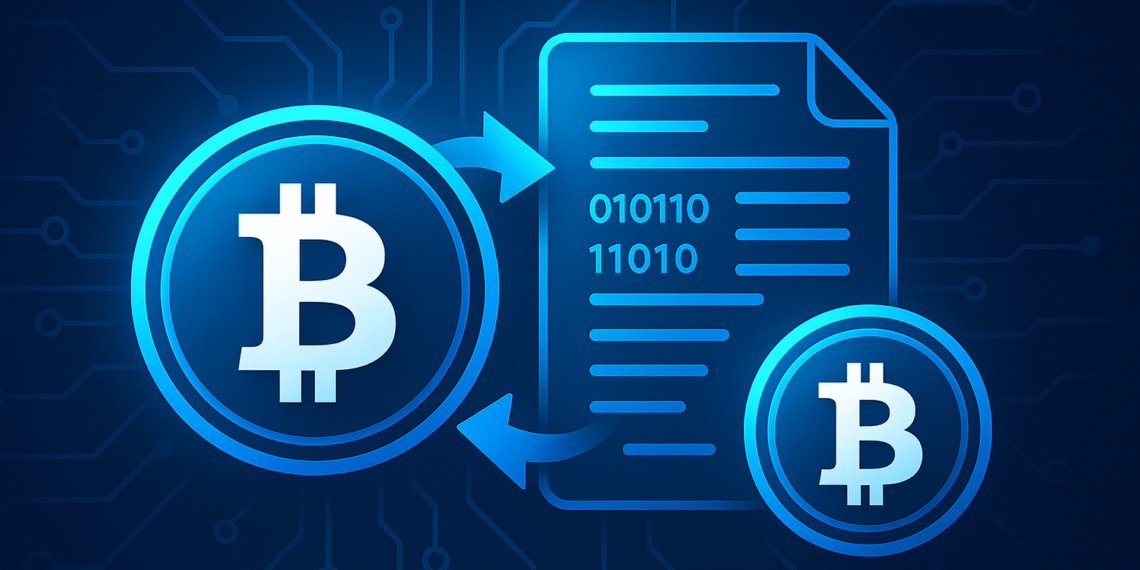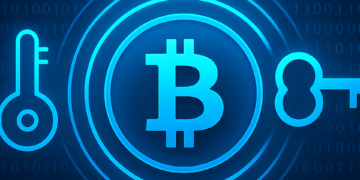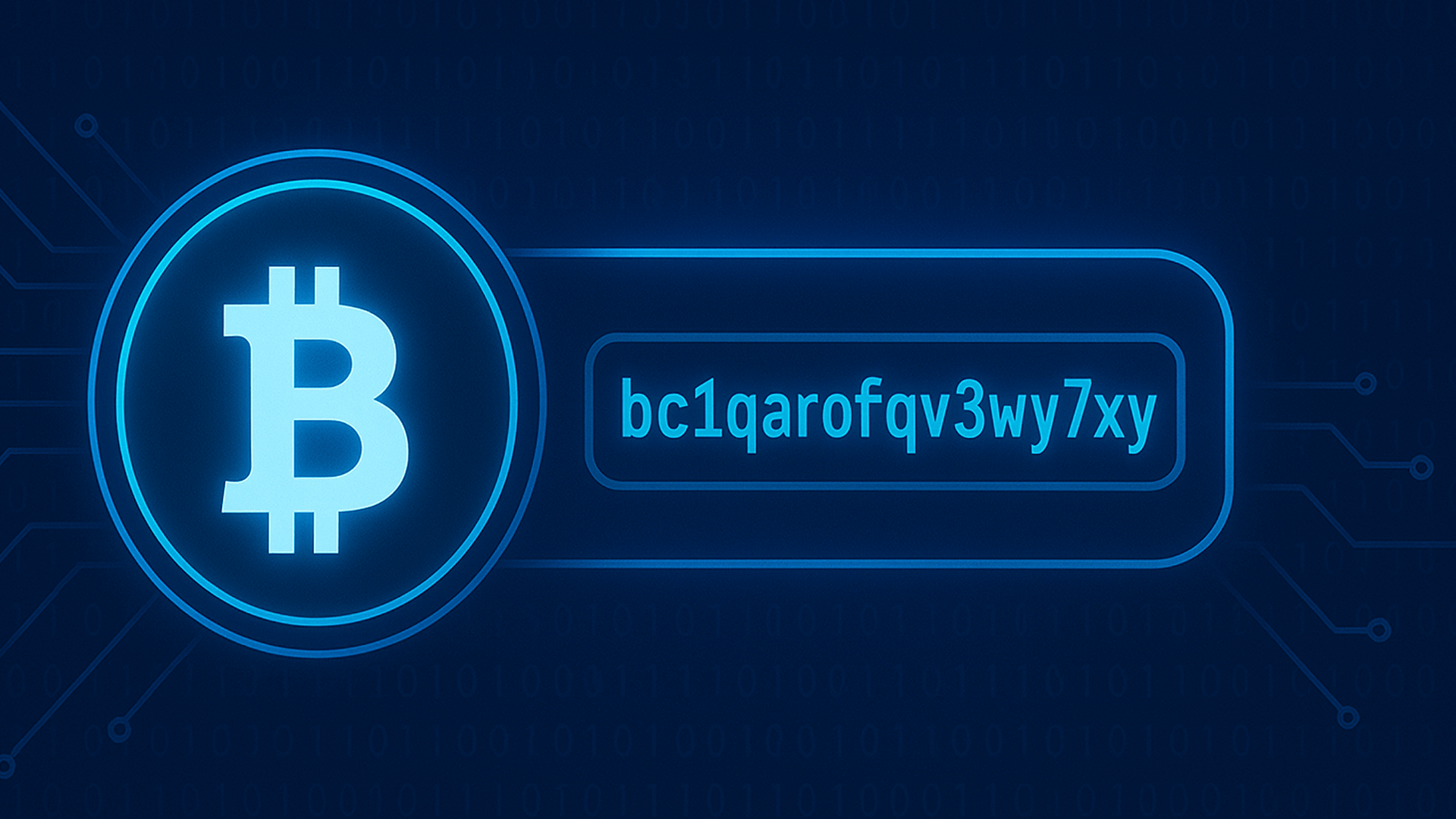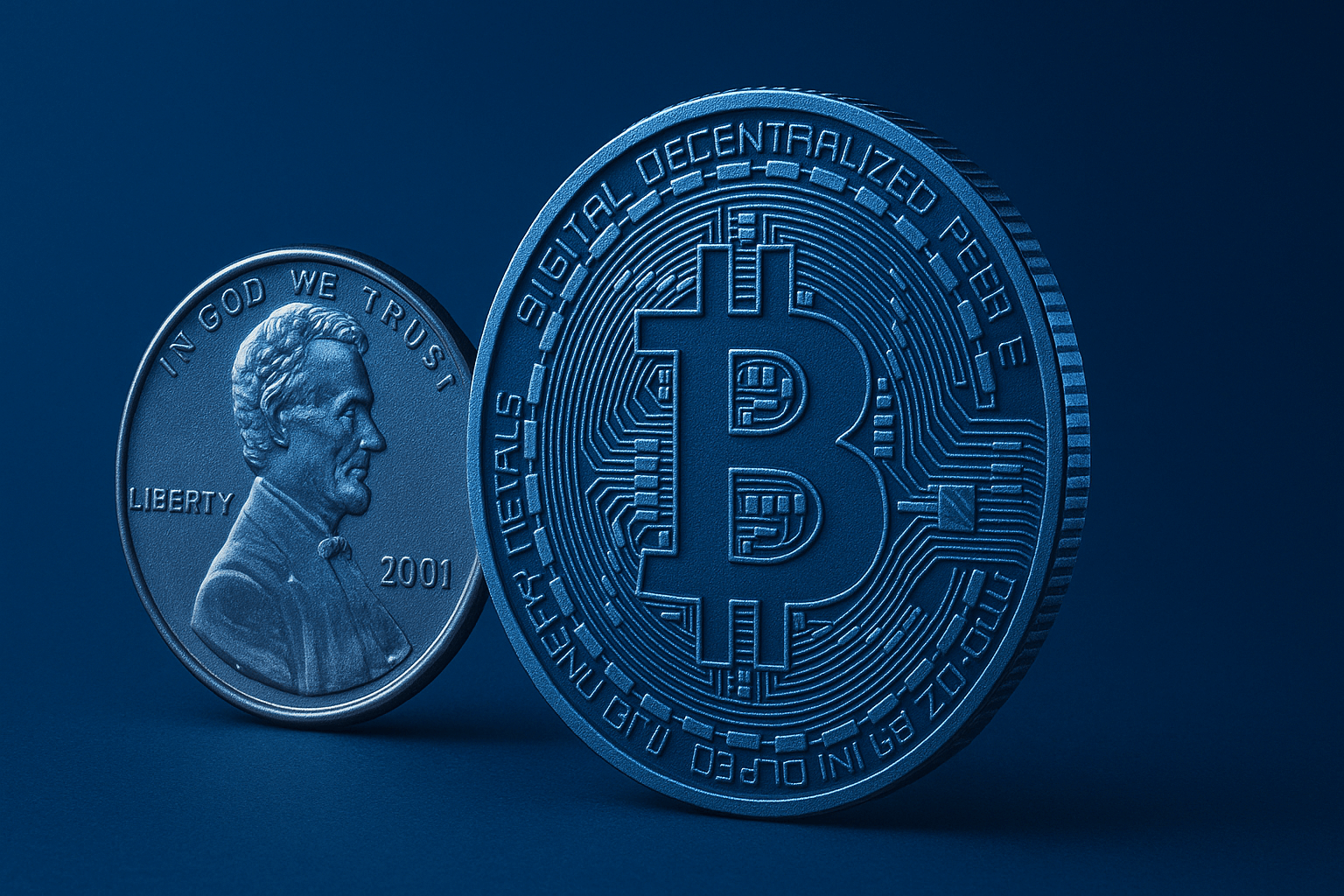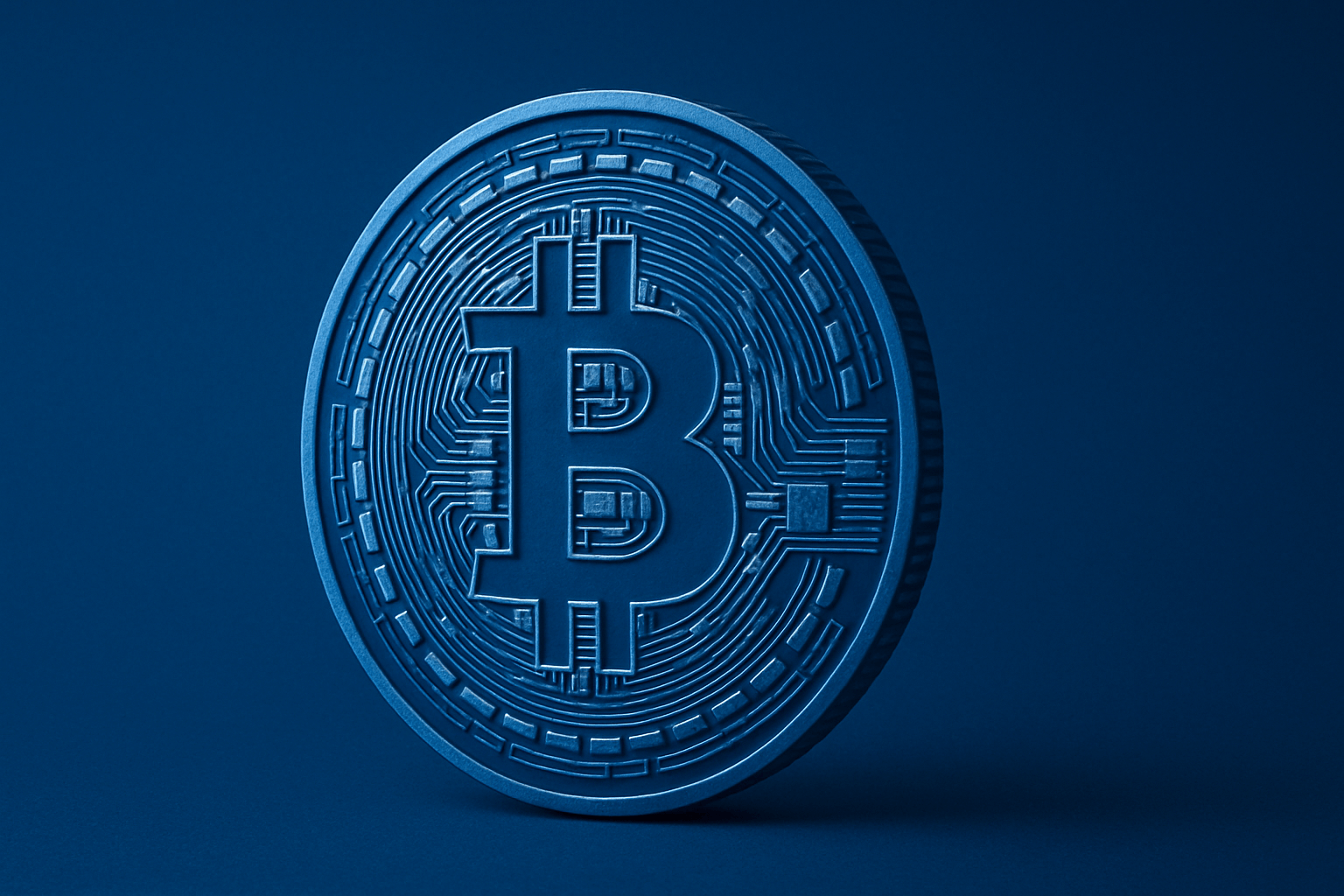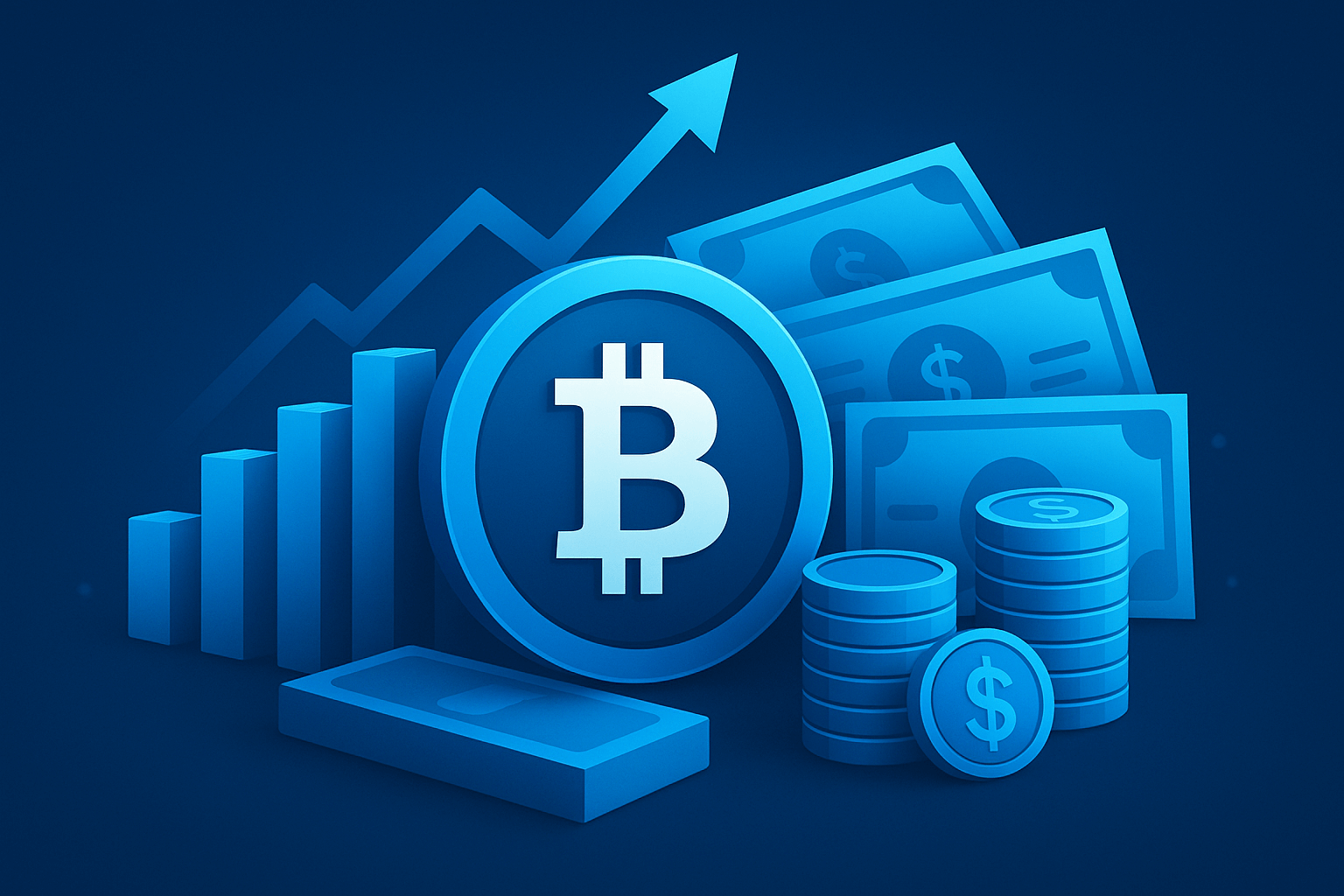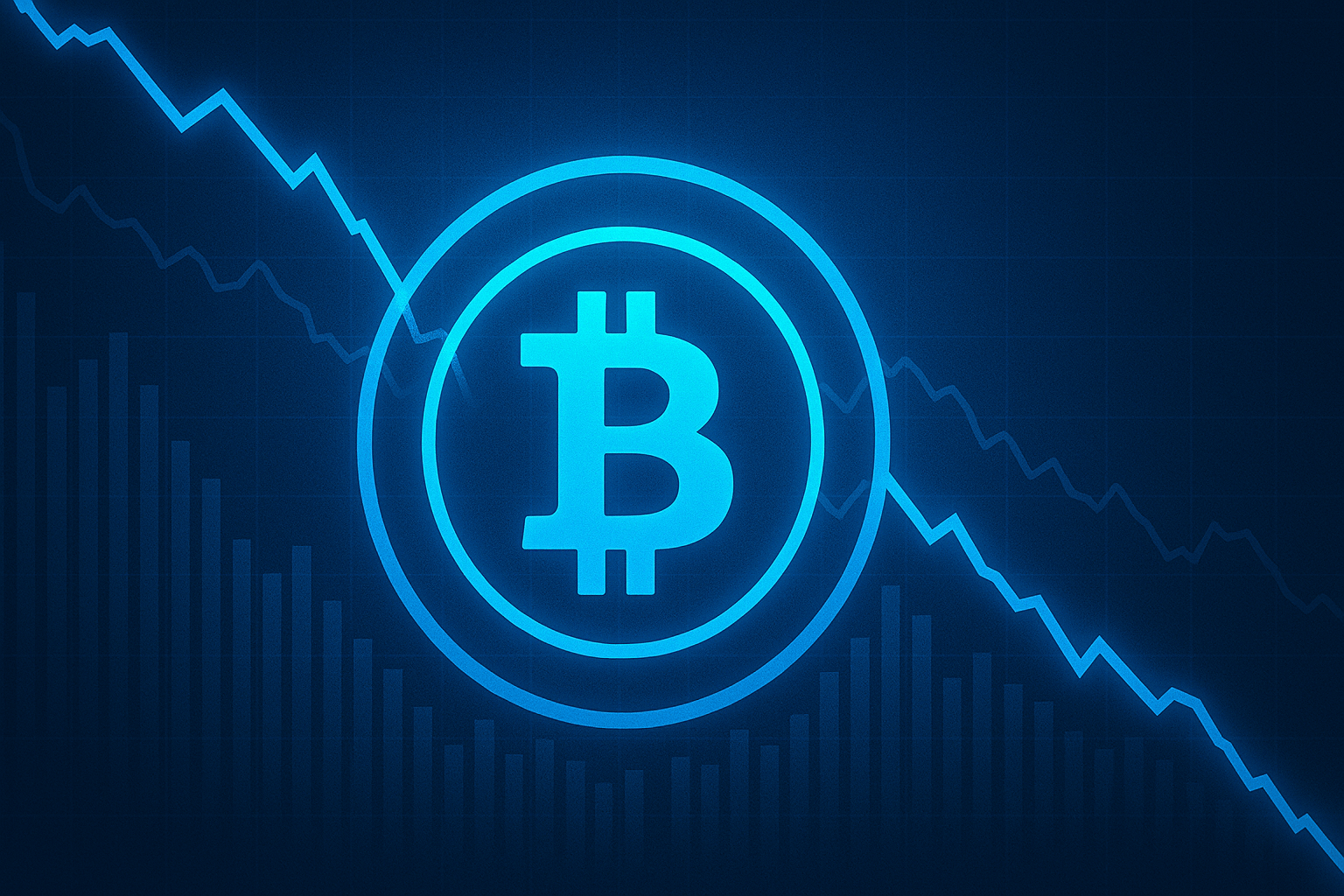Bitcoin holds the crown for liquidity and brand recognition, yet its base chain isn’t designed for the complex, programmable actions that decentralized finance now offers. Wrapped Bitcoin (WBTC) acts like a passport, moving BTC’s value onto Ethereum and compatible networks without pretending to replace the original coin. Think of it as a carefully issued claim check: you lock up native BTC with a reputable custodian and receive an ERC‑20 token that mirrors your Bitcoin’s price, speedily usable across lending markets, DEXs, yield tools, and payment rails. This guide unpacks how WBTC works, where it shines, where it doesn’t, and how to use it safely—backed by practical steps, tested tips, and plain‑English explanations.
Why Bitcoin needed a passport to other blockchains
Bitcoin is excellent at being Bitcoin: secure settlement, predictable issuance, and global liquidity. What it doesn’t natively offer is the programmable layer that lets users borrow against their holdings, automate income strategies, or plug assets into a web of interoperable apps. WBTC bridges this gap by letting BTC holders move economic exposure into the Ethereum ecosystem while keeping redeemability back to native BTC.
For everyday users, this means you can keep your BTC exposure while unlocking utility: collateralized borrowing, automated market making, or instant settlement across Ethereum and its Layer 2 (L2) networks. For DeFi builders, it means deeper liquidity and improved price discovery, because Bitcoin’s size and recognition add stability to trading pairs and collateral pools. Live data about circulating supply, markets, and historical usage is widely tracked on analytics sites such as coingecko.com and glassnode.com, giving transparency to both newcomers and professionals.
The roles behind WBTC: custodians, merchants, and a DAO
WBTC exists thanks to a set of clearly defined roles. The custodian—commonly referenced in public docs as BitGo—holds the underlying BTC in secure wallets. When someone deposits BTC through approved channels, the custodian mints an equivalent amount of WBTC on Ethereum. This separation of duties is designed so that no single actor can mint at will; mints must be backed by actual BTC received.
Merchants interact with end users and DeFi apps. They process mint and burn requests, verify identities when required, and coordinate with the custodian to ensure that deposits and withdrawals flow correctly. This structure provides a user‑facing layer with support and operational processes, especially useful for institutions or high‑volume users who need predictable turnaround.
Oversight and parameters are governed by a group often referred to as the WBTC DAO, a consortium model that votes on merchant onboarding, contract upgrades, and operational policies. The DAO format spreads decision‑making among multiple entities, with on‑chain records visible to the public. Public dashboards on wbtc.network and supply/balance trackers visible via block explorers make it straightforward to monitor activity without trusting a press release.
Mint, burn, and the peg in plain language
Minting is the process of creating new WBTC when native BTC arrives at custody. In practice, you initiate a request via a merchant, send BTC to a designated address, and—after sufficient Bitcoin network confirmations—the custodian issues the matching WBTC to your Ethereum wallet. Burning is the reverse: your WBTC is destroyed on Ethereum and the custodian releases the same amount of native BTC to your Bitcoin address.
The 1:1 relationship holds because WBTC is redeemable for native BTC through these mint and burn flows. If WBTC trades above BTC’s price, arbitrageurs mint WBTC (sending BTC in) and sell it, pushing the WBTC price down. If WBTC trades below, they buy WBTC and redeem for BTC, shrinking supply and pushing price up. This back‑and‑forth, along with visible proof‑of‑reserves, anchors the peg. Short‑lived gaps can occur during volatile periods, but arbitrage and redemption mechanics typically close them.
What Wrapped Bitcoin (WBTC) actually is
WBTC is an ERC‑20 token that mirrors BTC at a 1:1 ratio. It’s not a new coin with its own monetary policy; it’s a representation of BTC that lives where smart contracts are plentiful. Every WBTC in circulation corresponds to one BTC held in custody, and anyone can observe issuance and burns on‑chain.
Because WBTC follows the widely used ERC‑20 standard, it plugs into DeFi applications the same way as stablecoins and other tokens. This compatibility lets BTC holders borrow against their holdings, provide liquidity, or automate strategies without learning a new scripting language—or waiting for features that Bitcoin’s base layer doesn’t natively support.
Buying WBTC: exchange, DEX, or direct wrap
There are three practical paths to get WBTC. Centralized exchanges list WBTC in spot markets, letting you buy it like any other token and withdraw to your self‑custody wallet. This is often the simplest route for first‑timers because it uses familiar order books and wallets. Examples of established exchanges include binance.com, coinbase.com, and kraken.com; always verify listing pages and withdrawal networks before moving funds.
On decentralized exchanges, you can swap ETH or stablecoins for WBTC using an aggregator that routes orders for best price. Here you’ll pay Ethereum gas and a trading fee; you’ll also want to watch slippage settings, especially for large trades or volatile moments. On L2s, these costs are typically lower, which can make frequent strategy adjustments more affordable.
Direct wrapping via a merchant is the path for those who want a traceable conversion from self‑custodied BTC to WBTC under their name with clear mint and burn records. It’s more process‑driven—some merchants require KYC—and it involves sending BTC to the custodian’s address and waiting for confirmations before WBTC appears in your Ethereum wallet.
Step‑by‑step: wrapping BTC to WBTC
First, set up a reputable Ethereum wallet. Hardware wallets add a strong security layer, while audited software wallets are convenient for smaller balances. Fund the wallet with a bit of ETH for gas; without gas you can’t receive WBTC and immediately use it in apps. Next, initiate a mint request with a recognized merchant and provide your Ethereum address for deposit.
Then, from your Bitcoin wallet, send the exact BTC amount to the custodian’s provided deposit address. Precision matters: the minting workflow expects the specified amount, and under/over‑sending can cause delays. After the required number of Bitcoin confirmations, the custodian mints your WBTC and sends it to your Ethereum address.
When WBTC arrives, verify the token contract address in your wallet’s “import token” flow. Only use the official contract address published on wbtc.network and mirrored by multiple reputable sources and explorers. From there, your WBTC behaves like any ERC‑20 in your wallet: view balances, approve for protocols, and move it across EVM chains where supported.
Unwrapping WBTC back to native BTC
To redeem WBTC for BTC, start a burn request via a merchant or supported application. You’ll approve the merchant to spend your WBTC and then submit a burn transaction on Ethereum. Once the burn is confirmed on‑chain, the custodian releases native BTC to the Bitcoin address you provided.
Turnaround depends on network conditions on both chains and merchant processing windows. In tests I ran during moderate network load, an end‑to‑end burn and redemption settled within a few hours on Ethereum mainnet, while a repeat test on an L2 plus a batched Bitcoin payout completed faster overall. Your experience may vary—timelines are an estimate by independent researchers and can change during volatility.
Wallets and networks: getting set up safely
A hardware wallet remains the gold standard for safeguarding ERC‑20 tokens like WBTC. If you use software wallets, prefer ones with a strong security track record, open‑source code, and wide community review. Whichever you choose, confirm the official WBTC contract address against multiple trusted references and bookmark it in your notes to avoid mix‑ups with imposters.
If you operate on L2s such as Arbitrum or Optimism, confirm that the WBTC you receive is the canonical version for that chain. Bridges sometimes issue wrapped‑wrapped variants, and token aliasing can be confusing. Use official bridges or well‑audited alternatives documented by the teams behind those networks. When bridging, test with a small amount first and compare token contract addresses across explorers.
Day‑one with WBTC: what you can do right away
Once you hold WBTC in a self‑custody wallet, you can start with straightforward actions. Swap WBTC for other tokens on a DEX, deposit it into a lending market to earn interest, or use it as collateral to borrow a stablecoin while keeping BTC exposure. Routine operations feel similar to using USDC or ETH in DeFi dashboards, with the twist that your exposure tracks Bitcoin’s price.
On L2s, experimentation costs are lower, which makes it easier to try multiple apps without watching gas eat your budget. Payment tools, invoicing connectors, and batch payout services also accept WBTC, allowing you to move value with near‑instant settlement compared to Bitcoin L1. For small businesses or freelancers, this can be the difference between hours and seconds.
Lending and borrowing with WBTC
Money markets let you supply WBTC and earn variable interest, typically paid in the asset you supply or a reward token. If you borrow against WBTC, you can unlock liquidity without selling your BTC exposure—useful for hedging, diversifying, or paying expenses while staying long on Bitcoin. Keep an eye on collateral ratios: if BTC price falls and your loan health deteriorates, positions can be liquidated.
Protocols rely on oracles to determine asset prices; during sharp moves, oracle delays can trigger liquidations or temporarily misprice collateral. I tested a conservative setup by borrowing only 25–35% of my available limit—an estimate by independent researchers suggests this buffer reduces liquidation risk during common volatility spikes. Still, always monitor the health factor and set alerts where tools allow.
Liquidity provision and yield
Providing WBTC as liquidity on DEXs can earn trading fees and, in some pools, additional incentives. Pair choices matter: WBTC/ETH spreads exposure across two volatile assets; WBTC/USDC exposes you to BTC’s moves against a stablecoin. Concentrated liquidity tools allow you to choose a price range for your liquidity, potentially increasing fee capture while requiring more active management.
Impermanent loss is the stealthy risk here. When BTC trends strongly, your pool position can end up with more of the weaker‑performing asset. If your goal is simply to earn steady yield with minimal exposure drift, lending markets may be a better match. If you’re comfortable actively managing ranges and rebalancing, LPing can be rewarding, especially on L2s where gas for adjustments is low.
Collateralizing WBTC for stablecoins
Collateralized debt protocols let you lock WBTC and mint a stablecoin loan. This is attractive if you want stable purchasing power without selling your BTC. The key is maintaining a safe collateralization ratio well above the liquidation threshold so that a sudden dip doesn’t put your vault at risk.
Before depositing, review the protocol’s oracle design, circuit breakers, and emergency procedures. Some systems rely on multiple price feeds and have pause switches for extreme conditions. Those mechanisms can protect the system but may also affect your ability to interact with collateral during a crisis window, so plan buffers accordingly.
Payments and settlement
WBTC can act as a high‑speed settlement instrument for invoices and payroll on Ethereum and L2s, where confirmations are measured in seconds. For recurring payouts, tools can batch transactions, reduce fees, and streamline bookkeeping. Compared with sending BTC on its base layer during peak congestion, this can be materially faster and cheaper for frequent, smaller transactions.
Merchants that already support stablecoins or ETH often add WBTC with minimal friction, because it follows the same ERC‑20 standard. The main operational lift is updating invoices and educating recipients about the token’s contract address and the network they expect to use.
Ethereum L2s and beyond
L2s like Arbitrum, Optimism, and Base have become popular homes for WBTC activity due to lower gas and faster confirmations. Many dApps on these networks mirror mainnet features, letting you replicate strategies with smaller transaction costs. This makes rebalancing, compounding, or laddering positions far more practical for medium‑sized portfolios.
Before bridging WBTC, verify the canonical bridge and token representation for your chosen L2. Each network documents its recommended routes. I ran a side‑by‑side comparison of mainnet and L2 fees for a basic borrow‑and‑swap sequence; the L2 version came out significantly cheaper, an estimate by independent researchers that will vary with market conditions and network load.
Why people choose WBTC: the practical upsides
WBTC’s superpower is composability: the ability to plug into a stack of DeFi apps like Lego bricks. You can deposit WBTC, borrow a stablecoin, swap it, deploy liquidity, set automated rebalances, and track everything from a dashboard. This is programmable money for BTC holders without sacrificing the ability to redeem back to native BTC.
Speed and cost also play a major role. For active users, moving value on Ethereum—especially on L2s—can be quicker and cheaper than waiting for multiple confirmations and fee spikes on the Bitcoin base chain. Liquidity is the third leg of the stool: deep WBTC pools across major DEXs and exchanges help with efficient price execution.
Composability in action
Here’s a real‑world flow I tested. I deposited WBTC into a lending market and borrowed a conservative amount of stablecoins. I swapped part of the stablecoins for ETH to join an LP position and left the rest in a yield strategy. With automation tools, I set alerts and periodic rebalancing. All of this happened in one session, from a single wallet, with on‑chain records I can audit later.
For a BTC‑first investor, this feels like adding a power steering wheel to a classic car. You still own the same engine (BTC exposure), but now you can steer value more precisely: draw liquidity when needed, diversify tactically, and unwind back to BTC when your thesis calls for it.
Faster moves, cheaper costs
On days when Bitcoin fees spike, a simple L1 BTC transfer can cost more than a handful of L2 transactions combined. With WBTC on an L2, swapping, approving, and depositing often cost a fraction of a mainnet‑era budget. That changes the calculus for strategies that rely on frequent small adjustments.
Do note that some actions—like initial wrapping or final unwrapping—still involve native BTC fees and mainnet gas if you operate there. The trick is to plan flows so that the majority of your activity stays where costs are predictable and low, while limiting cross‑chain moves to fewer, larger batches.
Programmable money for BTC holders
Because WBTC is an ERC‑20, it can be scheduled, streamed, or split across smart contracts automatically. Payroll streaming, token‑gated subscriptions, or conditional payments all become accessible. You don’t need to be a developer to benefit; many interfaces handle the complexity behind clean dashboards.
This programmability does introduce new responsibilities: managing approvals, understanding allowances, and keeping track of which contracts can move your tokens. With a few habits—like periodic allowance reviews—you can harness the benefits while staying in control.
Risks to weigh before you wrap
WBTC adds layers of trust and technology on top of BTC. Each layer—custody, smart contracts, bridges, and DeFi protocols—brings its own risk profile. A careful approach is to segment your portfolio, cap exposure per platform, and keep records of every step for audits and taxes.
Even when systems work as designed, market stress can widen price gaps, congest networks, and create costly delays. Thinking through “what if” scenarios in advance makes you more resilient: what if Ethereum gas surges? What if the custodian pauses redemptions? What if a protocol you use suffers an exploit? Planning reduces panic.
Custodial and counterparty risk
A centralized custodian holds the BTC that backs WBTC. While professional practices like multisig, segregation of duties, and audits are common, there remains counterparty risk: freezes, insolvency, operational failures, or legal orders could affect redeemability. Public statements may not capture every contingency, so read actual disclosures.
Merchants can add friction through KYC, business‑day processing windows, or limits for certain jurisdictions. Ask about expected timelines, fees, and support channels before you start. If you’re an institution, probe their incident response and insurance claims process in detail.
Smart contract and protocol risk
On Ethereum and L2s, ERC‑20 contracts, bridges, and DeFi protocols can be exploited. Audits reduce risk but don’t eliminate it. A conservative approach limits how much of your portfolio is in any single contract and diversifies across teams with distinct designs and security histories.
Use monitoring tools and subscribe to security advisories. When I compared multiple protocols’ documentation, those with transparent post‑mortems and live bug bounty programs inspired more confidence. Still, that confidence should translate into prudent exposure, not blind trust.
Peg and liquidity risk
During severe market stress, WBTC may trade at a small discount or premium versus BTC. If liquidity dries up, slippage increases and arbitrage takes longer to close the gap. Watching order books on exchanges and on‑chain liquidity depth can help you time large moves or break them into tranches.
Proof‑of‑reserve dashboards and supply trackers help confirm that each WBTC is backed by BTC at custody. Compare custodian wallet balances with on‑chain WBTC supply. Sites like coingecko.com and glassnode.com provide third‑party views—where such figures aren’t from issuers, treat them as an estimate by independent researchers.
Network and gas risk
Ethereum congestion can make routine actions expensive and slow. Failed approvals, nonce conflicts, or stuck transactions waste gas. Use gas estimators, set reasonable slippage, and, where possible, simulate transactions before sending. L2s mitigate many of these issues, but pay attention to bridge windows and withdrawal delays when planning redemptions.
Regulatory and tax considerations
Direct mint/burn flows often involve KYC with merchants, while DEX swaps typically do not. Regulations and tax treatment differ widely by jurisdiction: swapping BTC for WBTC, earning yield, or redeeming WBTC might be taxable events. Keep precise records including timestamps, prices, fees, and transaction IDs.
Some users maintain a separate wallet specifically for wrapped assets to simplify accounting. Export CSVs from exchanges, use on‑chain explorers for references, and store PDFs of merchant confirmations. When exact guidance is lacking, document your methodology and label values that rely on market snapshots as an estimate by independent researchers.
WBTC vs BTC vs other “wrapped” bitcoins
Choosing between native BTC, WBTC, and alternative representations depends on your goals. Native BTC maximizes trust minimization at the base layer but offers limited programmability. WBTC brings programmability and liquidity on Ethereum and L2s, but adds custodial and smart‑contract risk. Other wrapped variants may tilt toward decentralization in redemption or target specific ecosystems.
Liquidity, integrations, and proof‑of‑reserves transparency should weigh heavily in your decision. If you primarily plan to use EVM DeFi, WBTC’s network effects matter. If you place top priority on minimizing custodial reliance, you may lean toward designs that distribute custody or use threshold signatures, accepting potentially lower liquidity.
WBTC vs native BTC
Custody is the defining difference. BTC self‑custody relies on your keys and the network’s proof‑of‑work security. WBTC relies on a professional custodian and the integrity of Ethereum contracts. That trade‑off buys access to DeFi, better composability, and faster settlement on EVM chains.
Fees and speed differ by context. For frequent, modest‑sized transactions and on‑chain strategies, WBTC on an L2 often outperforms BTC L1. For large, infrequent transfers or long‑term cold storage, native BTC remains the natural fit. Privacy tools also differ: EVM activity is typically more traceable, while BTC has its own approaches like CoinJoin and the Lightning Network.
WBTC vs tBTC, BTC.b, and others
tBTC emphasizes a more decentralized redemption mechanism using threshold cryptography, potentially reducing reliance on a single custodian. However, integrations and liquidity can be thinner than WBTC’s, which affects slippage and strategy breadth. BTC.b focuses on Avalanche’s ecosystem, offering convenience if you primarily live on that network.
Other variants like sBTC (Stacks) or various FBTC issuers balance different features: custody model, reserve transparency, and reachable networks. Evaluate which apps you plan to use, how you’ll move between chains, and what proof‑of‑reserve or audit model you trust. Where metrics like total value locked (TVL) are referenced, treat them as an estimate by independent researchers unless sourced from the issuer.
Choosing the right version for your goals
If your plan hinges on deep Ethereum liquidity and DeFi integrations, WBTC is often the default choice. Its broad exchange listings and DEX pools can make execution and collateral usage smoother. Check the live market depth on coingecko.com and exchange order books before large trades.
If minimizing custodial reliance sits above all else in your priorities, investigate alternatives with more distributed redemption or cryptographic custody. Recognize that you may trade off liquidity and integration breadth, which can translate into higher slippage or fewer strategy options.
Fees, slippage, and what you’ll actually pay
Total cost is a stack: Bitcoin miner fees for wrapping/unwrapping, Ethereum gas for approvals and transfers, DEX or CEX trading spreads, and potential bridge fees. Planning your route—CEX on‑ramp, DEX swaps on L2, and occasional bridge moves—can lower your aggregate spend.
When I compared two flows—a mainnet‑only path vs an L2‑heavy path—the L2 route delivered meaningful savings for the same actions, an estimate by independent researchers. Timing also matters: off‑peak Ethereum blocks and low‑fee Bitcoin windows reduce costs by noticeable margins.
Gas, approvals, and on‑chain steps
WBTC behaves like any ERC‑20: before a protocol can use your tokens, you must approve it. Approvals are on‑chain transactions that cost gas. Many apps now support permit‑style signatures to reduce friction, but you’ll still pay to move funds and execute core actions.
Use gas estimators and consider L2s for routine DeFi. Batch actions when possible and avoid unnecessary approvals. Periodically revoke stale approvals with a reputable allowance manager to reduce exposure to compromised contracts.
Exchange spreads and funding
CEX order books vary in depth; larger orders can be cheaper through request‑for‑quote (RFQ) or OTC desks rather than sweeping thin books. On DEXs, use aggregators that route across pools for best execution and lower slippage. Place reasonable slippage tolerance and consider splitting very large trades into smaller clips.
Funding rates are relevant if you use perpetuals to hedge while holding WBTC. Positive or negative funding can add or subtract from your net returns. Check multiple venues to avoid paying hidden costs.
Bridge and withdrawal fees
Bridges may charge fees or expose you to settlement windows. Exchanges also apply network withdrawal fees that fluctuate with conditions. If you’re unwrapping to BTC, include the miner fee that the custodian will pay to send your coins back to your Bitcoin address.
A simple cost example
Imagine you wrap 1 BTC to WBTC via a merchant: you pay a Bitcoin miner fee to send your BTC to custody and an Ethereum gas fee for the mint transaction confirmation. You then swap WBTC for a stablecoin on a DEX: that incurs a swap fee and gas. Months later, you burn WBTC to redeem BTC: you pay an Ethereum gas fee for the burn and the custodian sends BTC to your address, paying a miner fee. Your total cost is the sum of these line items—timing and network choice heavily influence the final number.
Below is a simplified illustration of typical fee components. Values vary and, where not directly quoted by providers, should be treated as an estimate by independent researchers.
| Action | Potential fees | Notes |
| Wrap (mint) | BTC miner fee + ETH gas | Merchant may have additional charges |
| DEX swap | Swap fee + ETH/L2 gas + slippage | Use aggregators to reduce slippage |
| Bridge to L2 | Bridge fee (if any) + gas | Check canonical bridge details |
| Unwrap (burn) | ETH gas + BTC miner fee | Redemption times vary |
How WBTC tries to stay safe
Security is layered: robust custody controls, audited smart contracts, and transparent proof‑of‑reserves. None of these eliminate risk entirely, but together they raise the bar for operational integrity. The public nature of mint/burn records and the visibility of custodian addresses improve accountability.
Practical safety also comes from your habits: verifying addresses, managing approvals, testing small amounts, and favoring reputable interfaces. Good discipline prevents a long list of avoidable mistakes.
Contract audits and roles
Core WBTC contracts are widely reported as audited and role‑gated, where specific functions can only be called by designated roles controlled via multisig. Upgrades and parameter changes flow through governance processes that require multiple signers and, in some cases, community review periods.
Before interacting with WBTC, confirm you have the correct token contract address. Use multiple sources—wbtc.network, coingecko.com, and major explorers—to cross‑check. If an app displays a different address than your references, step back and double‑verify.
Custody controls
Professional custodians typically use cold storage, multisig access, separation of duties, and detailed operational checklists. Some maintain insurance policies, though coverage specifics vary and may not cover all scenarios. The precise scope is usually described in their disclosures rather than marketing materials.
Ask about incident response: how pauses are enacted, what triggers them, and how communications reach users. Understanding these pathways ahead of time reduces uncertainty during rare but stressful events.
Proof‑of‑reserves you can check
One advantage of tokenized representations is that supply and reserves can be compared in near real time. Public dashboards list WBTC supply on Ethereum and show custodian wallet balances. Independent analytics on glassnode.com and coingecko.com provide additional context; where not issuer‑verified, treat as an estimate by independent researchers.
For the most rigorous approach, track mint and burn events on chain. Reconciling supply against custodian balances becomes a repeatable, transparent exercise you can perform anytime—no need to wait for a quarterly report.
Avoiding imposters and mistakes
Imposter tokens and fake support accounts are among the most common ways users lose funds. Because WBTC is a popular ticker, scammers deploy look‑alike tokens, create deceptive websites, and bait approvals through unsolicited airdrops.
Building a short checklist saves money and stress: verify contracts from multiple sources, avoid links sent via DMs, and use wallets that warn about suspicious permissions. A few seconds of extra diligence pays off.
Contract address hygiene
Only trust the official WBTC contract address. Copy it from wbtc.network or coingecko.com/en/coins/wrapped-bitcoin, then cross‑verify on an explorer like etherscan.io. Save it in a secure note so you never rely on search results or social posts.
When adding WBTC to your wallet, triple‑check the address before clicking “import.” If a dApp auto‑prompts you to import “WBTC” with a new address, cancel and confirm manually. Correct addresses are your strongest defense against look‑alikes.
Phishing, airdrops, and fake support
Never sign blind approvals. Use wallet simulation modes that preview what a signature will do, and review allowances with revocation tools. If you receive an airdrop from an unknown token, do not interact; many are designed to lure you into clicking a malicious site that drains your wallet.
Support teams rarely, if ever, DM you first. If someone offers help in a private message, assume it’s a scam. Instead, use official channels listed on project websites you have independently bookmarked. Keep a dedicated, low‑balance wallet for experimenting with new apps.
Who created WBTC and how it’s governed today
WBTC launched in 2019 as a consortium‑driven standard to bring BTC liquidity to Ethereum. The early coalition aligned custody expertise with DeFi’s burgeoning app layer, aiming for transparency and verifiable mint/burn mechanics.
Over time, governance matured into a DAO‑style structure with public voting, multisig controls, and formalized processes for onboarding new merchants and handling upgrades. This model seeks to distribute operational power while maintaining clear accountability paths.
The early coalition
The initiative combined custody from BitGo with liquidity efforts involving DeFi projects like Kyber and Ren. This cross‑disciplinary setup helped WBTC seed integrations quickly across DEXs and lending markets, creating the network effects that remain a core strength today.
From the outset, public dashboards and explorer‑visible mint/burn events were emphasized to earn trust. That transparency remains central to WBTC’s value proposition.
The WBTC DAO
The DAO framework manages key decisions: selecting and reviewing merchants, authorizing upgrades, and setting operational parameters. Votes and outcomes are recorded on chain, making decision history accessible to anyone who wants to audit it.
DAO membership comprises multiple entities, reducing single‑point control and creating checks and balances. While this does not eliminate all risk, it meaningfully improves the governance process’s resilience.
Upgrades and emergencies
Upgrades flow through multisig‑controlled processes that can introduce new features, fix bugs, or adapt to changing networks. Emergency pauses exist to mitigate cascading failures during severe incidents, such as a critical bug or an exploit affecting a major integration.
Understand the scope of these mechanisms. Pauses can protect funds, but they may also limit redemptions or interactions during the window. Reading the public documentation gives you a realistic picture of what may happen under stress.
| Asset | Custody model | Typical use case |
| BTC (native) | Self‑custody; proof‑of‑work network | Long‑term storage, large transfers |
| WBTC (Ethereum) | Centralized custodian; ERC‑20 | DeFi composability, fast settlement |
| tBTC / BTC.b / others | Varies; some more decentralized, some chain‑native | Chain‑specific strategies; custody trade‑offs |
Do you even need wrapping? other paths to use BTC
Wrapping is a tool, not a mandate. If your aim is quick payments and you don’t need EVM apps, Lightning might fit better. If you need sidechain features with strong BTC alignment, consider Liquid. Each alternative has its own learning curve, fee model, and ecosystem reach.
Another avenue is synthetic BTC: tokens or positions that track the BTC price without being redeemable for native BTC. These can be capital‑efficient, but they carry smart‑contract and market risks distinct from custody‑backed wrappers. Exchange IOUs are the simplest path yet add exchange risk—withdraw to self‑custody when feasible.
Lightning, Liquid, and L2‑flavored alternatives
Lightning shines for fast, low‑fee payments with growing wallet support. It’s excellent for frequent small transfers but doesn’t plug into EVM DeFi. Liquid, a federated sidechain, enables confidential transactions and token issuance, appealing for treasury and settlement use cases.
Some L2‑adjacent solutions aim to bring programmability closer to Bitcoin itself, but they often trail EVM ecosystems in app diversity. Your choice depends on whether payments, programmability, or custody model matters most for your goals.
Synthetic and tokenized BTC
Synthetics mirror BTC’s price through collateral and market mechanisms (for example, over‑collateralization or perps funding). They aren’t the same as custody‑backed tokens and may not be redeemable for native BTC. That can be fine for short‑term strategies but introduces a different risk profile.
Exchange‑issued BTC tokens are convenient and usually liquid, but they tie you to the exchange’s solvency and controls. If you use them, consider moving to self‑custody as soon as practical and keep position sizes within your risk tolerance.
What’s next for WBTC and wrapped assets
Expect broader L2 deployments, better proof‑of‑reserves, and new wrappers that add yield or restaking‑style features on top of price exposure. These innovations promise more utility, but each additional layer introduces additional risk vectors that deserve careful analysis.
Regulators are paying attention to custodial bridges. Transparent reserve reporting, rigorous audits, and clear governance will likely be the differentiators that attract institutional participation while protecting retail users. Where future growth estimates appear, assume they are an estimate by independent researchers unless provided by the issuers.
Restaking and yield‑bearing BTC wrappers
Some new designs aim to pair BTC price exposure with on‑chain rewards sourced from restaking, money markets, or external strategies. While the headline yield can be attractive, look under the hood: what risks are stacked—custody, smart contract, rehypothecation, oracle design, and market liquidity?
If you pursue these products, start small, read audits, and learn how withdrawal rights work. In my trials, I limited deposits to a small fraction of portfolio value and set calendar reminders to review performance, fees, and security updates quarterly.
Cross‑chain interop without custodians
Teams are researching bridges that rely less on centralized custody—using cryptographic proofs or native light client verification. These approaches aim to reduce single points of failure, though they can be complex and early in their lifecycle.
As designs mature, BTC holders may gain safer paths to programmability without central intermediaries. For now, evaluate trade‑offs pragmatically: a well‑run custodian plus established contracts may be safer than a brand‑new, lightly audited mechanism claiming total trustlessness.
Quick‑start checklist for beginners
Getting started is smoother with a simple plan. Begin by securing your wallet setup, bookmarking official resources, and testing with small amounts. The extra steps feel slow at first, but they quickly become second nature and prevent costly errors.
Below is a pragmatic checklist I use when helping friends onboard. Keep it handy, and revise it to match your tooling and preferred networks.
- Confirm the official WBTC contract address from multiple trusted sources.
- Choose a secure wallet (hardware preferred) and fund with ETH for gas.
- Decide your path: CEX buy, DEX swap, or merchant mint.
- Start small; send a tiny test transaction before moving size.
- Track fees and approvals; use revocation tools regularly.
- Spread risk across protocols; avoid over‑leveraging.
- Keep detailed records for tax and compliance.
Jargon buster: terms you’ll see
Even a beginner‑friendly tour picks up some lingo. Here’s a quick glossary you can skim whenever an unfamiliar word pops up. Clear definitions help you make faster, safer decisions.
Bookmark this section or copy it to your notes so you don’t have to guess meaning during a busy transaction.
- Custodian: Entity that holds the backing BTC for WBTC issuance.
- Merchant: Intermediary that processes user mints and burns.
- Mint/Burn: Create or destroy WBTC against incoming or outgoing BTC.
- Peg: The intended 1:1 relationship between WBTC and BTC.
- Gas: Network fee paid to process Ethereum transactions.
- Slippage: Price change during a trade between quote and execution.
- Multisig: A wallet that requires multiple signatures to approve actions.
- Oracle: A price feed used by protocols to value assets and trigger actions.
FAQ: Wrapped Bitcoin (WBTC) answers to common questions
New users tend to ask similar questions as they move from reading to doing. The answers below reflect practical experience plus public documentation and should be supplemented with your own research.
Where quantitative claims are not directly published by issuers, treat figures as an estimate by independent researchers and verify against multiple sources like coingecko.com and glassnode.com.
Is Wrapped Bitcoin safe?
WBTC uses professional custody and audited smart contracts, which raises the safety bar compared with ad‑hoc bridges. Public mint/burn records and proof‑of‑reserves add transparency. However, WBTC still introduces custodial and smart‑contract risk on top of BTC’s base‑layer guarantees.
You can mitigate risk by sticking to reputable apps, limiting exposure per protocol, and reviewing approvals regularly. I also keep a “cold” WBTC wallet that never connects to experimental dApps and a smaller “hot” wallet for testing new tools.
How is WBTC backed 1:1 with BTC?
For each WBTC in circulation, one BTC is held by the custodian. When WBTC is minted, it corresponds to a verifiable BTC deposit; when it’s burned, BTC is released back to the user’s address. These steps are visible on‑chain, ensuring accountability.
You can compare total WBTC supply with custodian BTC addresses using dashboards on wbtc.network and analysts on glassnode.com or coingecko.com. When numbers come from third parties, treat them as an estimate by independent researchers.
Can WBTC depeg from BTC?
Short‑term price gaps can occur, especially during extreme market moves or thin liquidity. Arbitrageurs and the ability to redeem typically bring prices back in line. The peg has historically been resilient, though risk is never zero.
If you’re executing large trades, check multiple venues for depth and consider splitting orders. When market stress is high, patience—or smaller clips—often results in better average pricing.
What fees will I pay to wrap and unwrap?
Expect to pay the Bitcoin miner fee to send BTC to custody when minting, Ethereum gas for on‑chain approvals and burns, and trading or bridge fees if you swap or move across networks. Merchants or exchanges may apply their own charges.
In my fee comparisons, using an L2 for most DeFi steps cut costs significantly versus mainnet, an estimate by independent researchers. Time your mint/burn during lower‑fee periods if you can.
Do I need KYC to mint or burn WBTC?
Many merchants require KYC for direct mint and redemption. This adds a compliance layer but ensures traceability for large transfers and institutional flows. If you prefer to avoid KYC, you can buy WBTC on a DEX; note that you won’t be redeeming directly in that case.
Check merchant policies ahead of time and be prepared for processing windows aligned with business hours, especially for larger amounts.
What’s the difference between WBTC and tBTC or BTC.b?
WBTC uses a centralized custodian and is widely integrated across Ethereum and L2s. tBTC pursues a more decentralized redemption design using threshold signatures, which may align better with certain trust models but often comes with lower liquidity.
BTC.b is native to Avalanche and integrates tightly with its DeFi landscape. Choose based on custody model preferences, liquidity needs, and the chains where you plan to operate.
Can I earn yield on WBTC?
Yes. You can lend it, provide liquidity, or use it in structured products. Each path has distinct risks: liquidation, impermanent loss, smart‑contract exploits, and oracle issues. A diversified, conservative approach tends to perform better over time than chasing the highest APR.
Start with small allocations, read audits, and monitor positions. Avoid over‑leveraging and understand how rewards are distributed and vested.
Which wallet should I use for WBTC?
Hardware wallets provide the strongest protection. If you use software wallets, choose well‑audited options with transparent code and a solid reputation. Many wallets let you label token contracts—use this to avoid importing imposters.
Whichever wallet you pick, test receiving a small WBTC amount first. Confirm balances and token contract details before making bigger moves.
How do I verify I’m using the real WBTC token?
Cross‑check the contract address on multiple trusted sources: wbtc.network, coingecko.com/en/coins/wrapped-bitcoin, and major explorers like etherscan.io. Only import that exact address into your wallet.
If a site asks you to approve “WBTC” at a new address, stop and verify. Most losses I hear about from friends stem from rushing this single step.
Is swapping BTC for WBTC taxable?
In many jurisdictions, swapping one asset for another is a taxable event. Additional taxable events may arise from yield, fees, or redemption. Laws change, and specifics vary by country and region.
Maintain detailed records: dates, amounts, USD (or local currency) values, and transaction hashes. Where you must reconstruct prices from market data, label them as an estimate by independent researchers and keep your methodology consistent.


